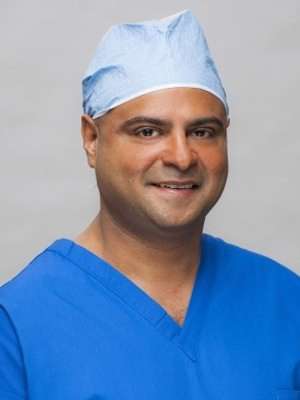Osteonecrosis is a serious condition that literally means death of bone tissue (“osteo” means “bone,” and “necrosis” means “tissue death”). It occurs when the blood supply that provides the bone with oxygen and other important nutrients is cut off.
About 20,000 people are newly diagnosed with osteonecrosis in the U.S. each year. Osteonecrosis is the most common cause of knee pain in older women, who are three times as likely as men to develop the condition.
What causes osteonecrosis?
Some people who develop osteonecrosis have an underlying condition that causes or contributes to the decline in blood flow to the bone tissue. However, in most cases, the cause of osteonecrosis is unknown.
Medical researchers believe prior injury such as a stress fracture or traumatic injury may contribute to decreased blood flow, while others believe fluid buildup in the tissues presses against blood vessels and reduces the normal flow of blood.
Osteonecrosis tends to occur more commonly among those who are obese, who have lupus or sickle cell anemia, who have had kidney transplants, or who have been on long courses of steroid medicines.
Osteonecrosis causes significant pain in the joints affected by the condition, especially during movement and at night. Some people may experience swelling and tenderness as well as a reduced range of motion. The disease progresses in four distinct phases, with symptoms being especially intense in the first stage, which lasts about six to eight weeks.
How is osteonecrosis treated?
In the early stages of osteonecrosis, nonsurgical management may be used, including anti-inflammatory medicines and exercises or physical therapy to help strengthen the joint and promote circulation. But as the disease progresses, surgery becomes more likely. Surgical options are based on the extent and stage of the disease, and can include:
- Cleaning or “debriding” the joint to smooth surfaces and remove debris
- Drilling the affected area to decrease bone surface pressure
- Procedures designed to redistribute weight and relieve stress on the joint
- Partial or complete joint replacement
Your course of treatment will be determined based on a thorough evaluation and examination of your joint to determine the best approach.
Choosing a treatment provider
As a top New York orthopedic surgeon, Dr. Karkare has extensive experience diagnosing and treating osteonecrosis in all its stages in patients from New York City and Long Island. At his practice locations in Manhattan, Bayside, Centereach, Lindenhurst, Riverhead and Pachogue, Dr. Karkare ensures every patient has access to the most advanced, most appropriate and most effective care options for the best possible results.
Like other joint- and bone-related disorders and diseases, osteonecrosis responds best to early diagnosis and treatment, so scheduling an appointment at the first sign of symptoms is critical. If you’ve been having knee, hip or other joint pain, call our practice at 516-735-4032 or book an appointment online so you can get the answers and the treatment you need for reduced pain, better health and improved quality of life.




